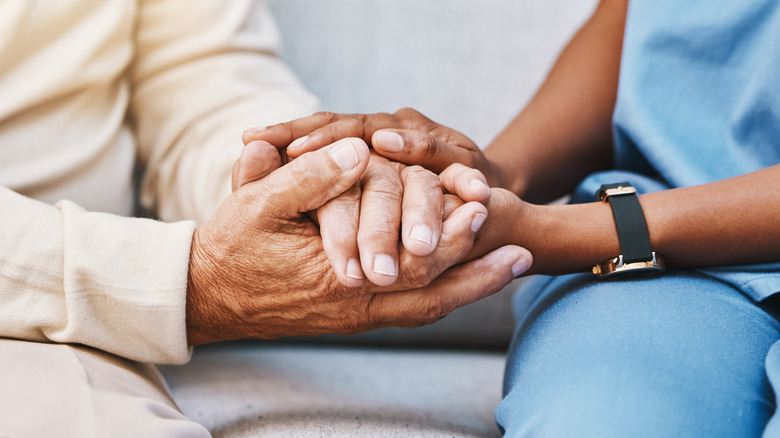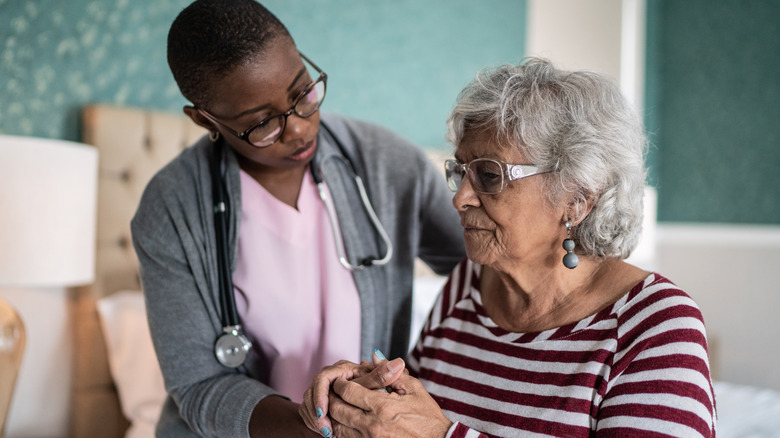Death Warning Signs You Might Notice 40 Days Before
Having a loved one who is dying can be both stressful and heartbreaking. You hold onto memories of when your loved one was active and vibrant, but you know their time is short. Even if the team of healthcare professionals can give you an estimate of how long your loved one might live, that could vary by weeks or months depending on the condition and treatment.
Months before the end of life, you might notice some early signs of a person as they begin to withdraw from the outside world. Becoming aware of these signs can help you and your loved one experience less fear and help them enjoy a better quality of life in the time they have left. A 2018 article in BMC Geriatrics interviewed healthcare professionals who worked in nursing homes. The study included input from nurses, occupational therapists, physical therapists, and social workers to determine some early warning signs of someone whose death is imminent.
People go into a bubble a few months before death
Healthcare professionals in palliative care say the earlier signs point to the idea that the person begins to cut off from the outside world. They lose interest in social activities and prefer to be alone. They also might seem depressed, feeling less interested in living. Someone who is in the early stages of dying might sleep more often. This could mean sleeping later in the morning, and the healthcare worker finds it difficult to wake the person up. The person might also retire to their bed or chair to sleep during the day or after dinner.
Some older adults might develop dementia, and others might experience confusion as a result of an infection or their medication. If none of these are the case in an older adult, a recent development of confusion could be another early sign of death. Older adults are more susceptible to falls, but as death approaches, their withdrawal from daily activities will make their mobility much worse. People who are in the early stages of death also lose interest in food, even if they have enjoyed food before. You might notice their clothes don't fit because they are losing weight.
Later signs of death
Early signs of death can resemble signs of other conditions, but later signs are much more clear to healthcare professionals. When a person is very close to death, the body shows physical and psychological signs of shutting down. Healthcare workers notice cold hands and feet in people who are near death because their circulation weakens. Ulcers could appear if the person becomes bedridden. Whereas in the early stages of dying, people might show signs of depression, people in the later stages of the dying process might become angry and frustrated. They might find it more difficult to express their frustration through language, and this can add to their restlessness. Some might also see and hear things before they die.
As people draw closer to death, they will stop eating and drinking. Healthcare workers often have to inject their medicine because the dying person won't take in fluids. When this occurs, the healthcare team does what it can to limit the patient's pain and anxiety. The patient will also begin to lose consciousness and breathe erratically in the final moments before death. Sometimes a patient might slow their breath to the point that the healthcare team believes the patient has passed. When the patient eventually loses consciousness, the healthcare team knows death could come in a matter of days.



